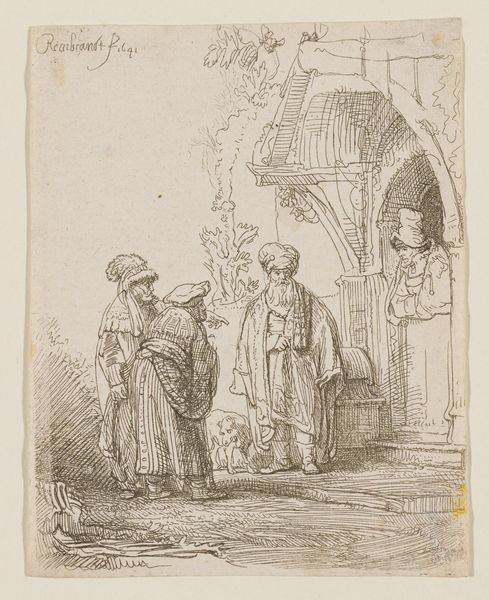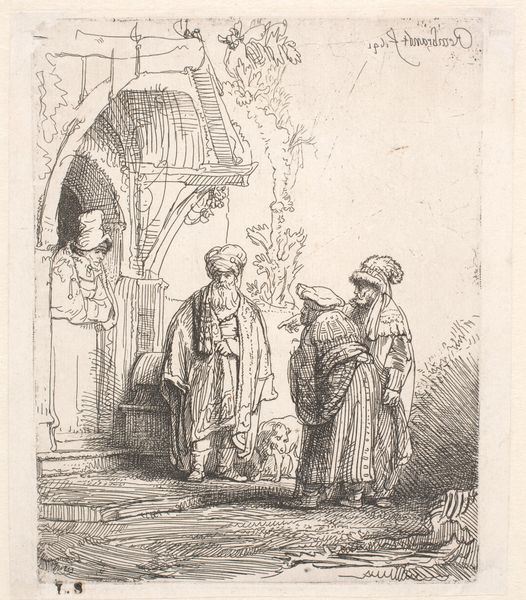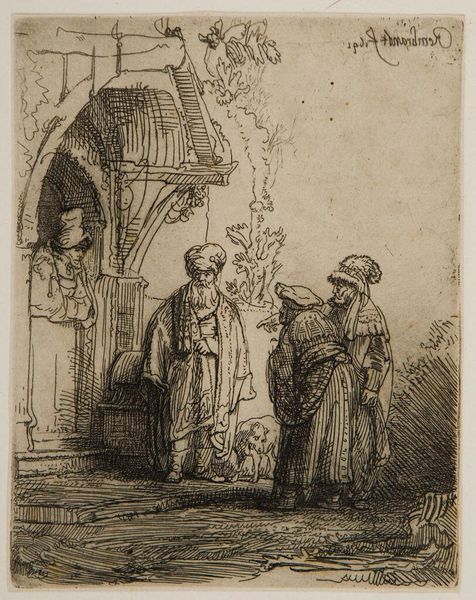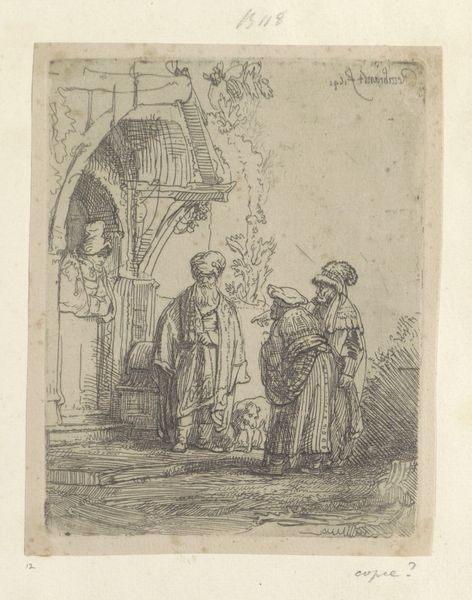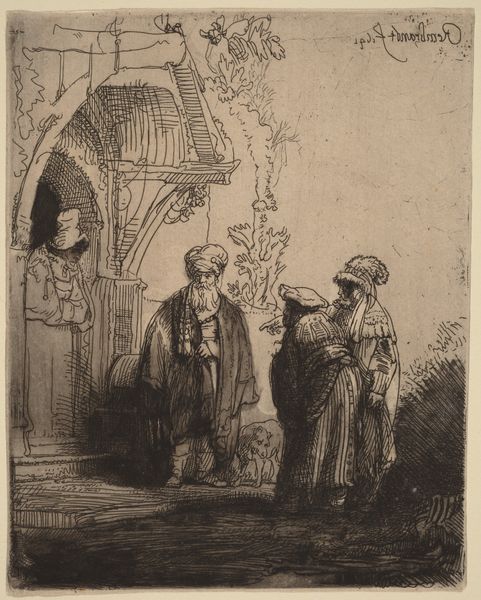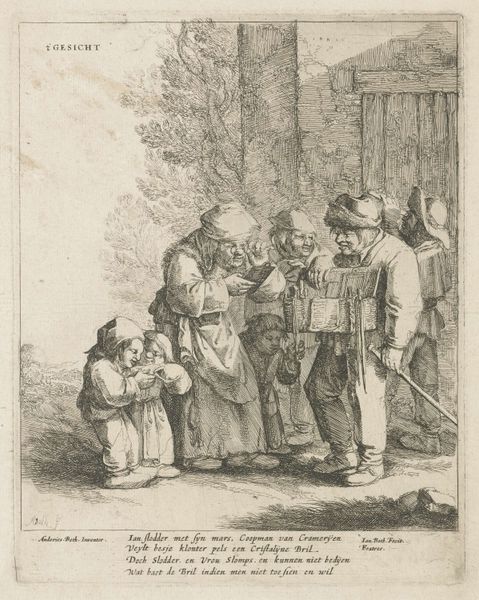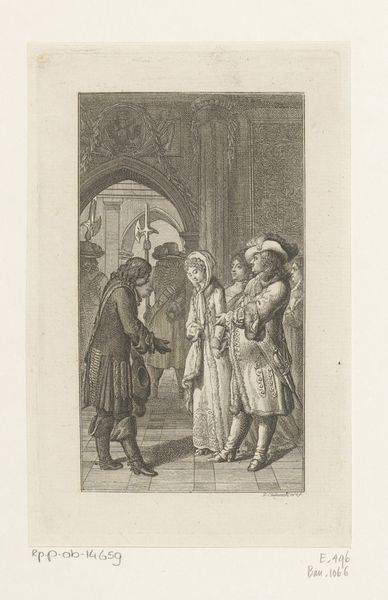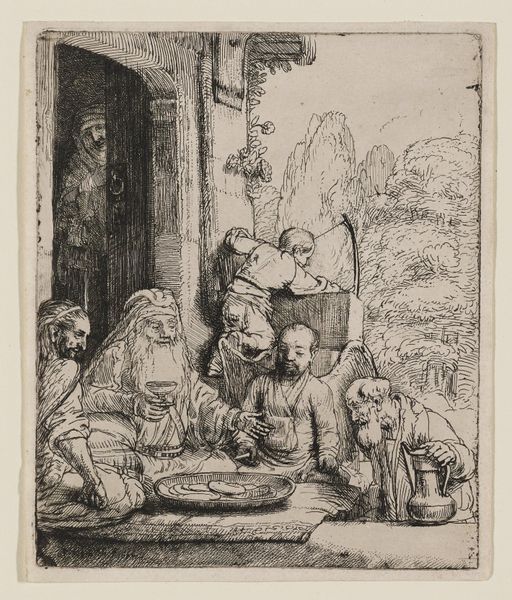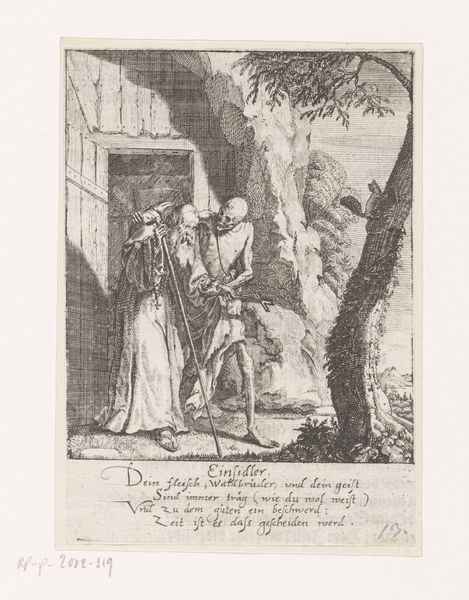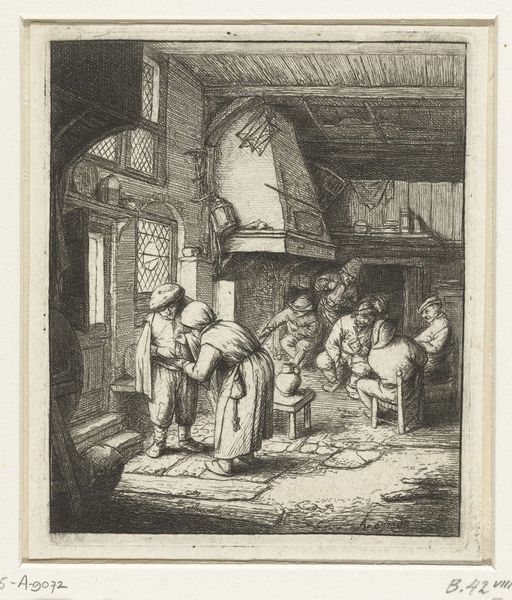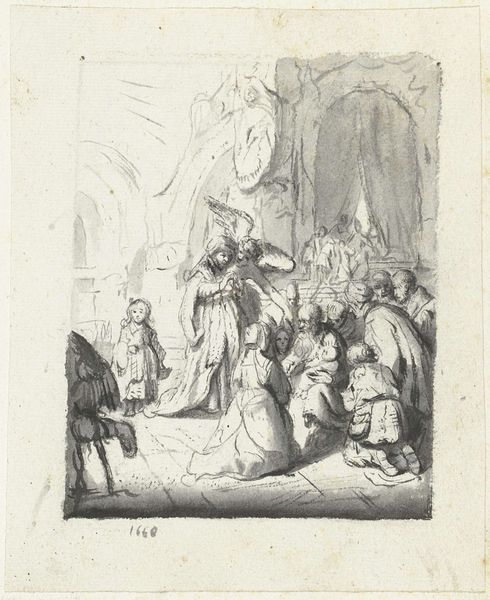
Dimensions: height 146 mm, width 108 mm
Copyright: Rijks Museum: Open Domain
Curator: This print from 1816, housed here at the Rijksmuseum, is titled "Three oriental figures (Jacob and Laban?)." Editor: It’s immediately striking; there's something about the linework that creates a palpable sense of texture, of weight to the figures. Almost feels theatrical. Curator: It is attributed to an anonymous artist, and created using etching and ink on paper. This period saw increased interest in depicting biblical scenes within an "Orientalist" framework, often reflecting contemporary European perceptions of the Middle East. Editor: That’s interesting, particularly when looking at their garments. Turbans, robes...are those deliberate visual cues designed to evoke a specific idea of "otherness" for the viewer? Because I definitely see a constructed visual language here, even the slight slouch of the figures hints towards specific gestures laden with symbolic value. Curator: Precisely! Such depictions were not necessarily accurate, but rather served to reinforce existing social hierarchies. How they dress, stand...it becomes part of a complex discourse between colonizer and colonized in many ways, reflecting power dynamics of the time. Prints like this would have circulated widely. Editor: Which raises another question – who exactly were its consumers? Prints make art accessible, yes, but their reception varies across different audiences. Curator: Absolutely. Prints such as this often made their way into albums owned by wealthy patrons; thus its influence reaches wide circles. Editor: When I look closely at that almost shy figure to the left, emerging from the structure, they exude caution. Curator: That, potentially, lends credence to the idea that we are looking at the tale of Jacob and Laban. Editor: It’s almost dreamlike, like catching fragments of an old play. I now look beyond the composition's Orientalist tone; here is tension that resonates to contemporary times. Curator: Exactly. It reminds us that art isn't created in a vacuum. Even an image from 1816 speaks to its contemporary issues, influencing—and being influenced by—them. Editor: I see echoes that continue reverberating within these images.
Comments
No comments
Be the first to comment and join the conversation on the ultimate creative platform.
